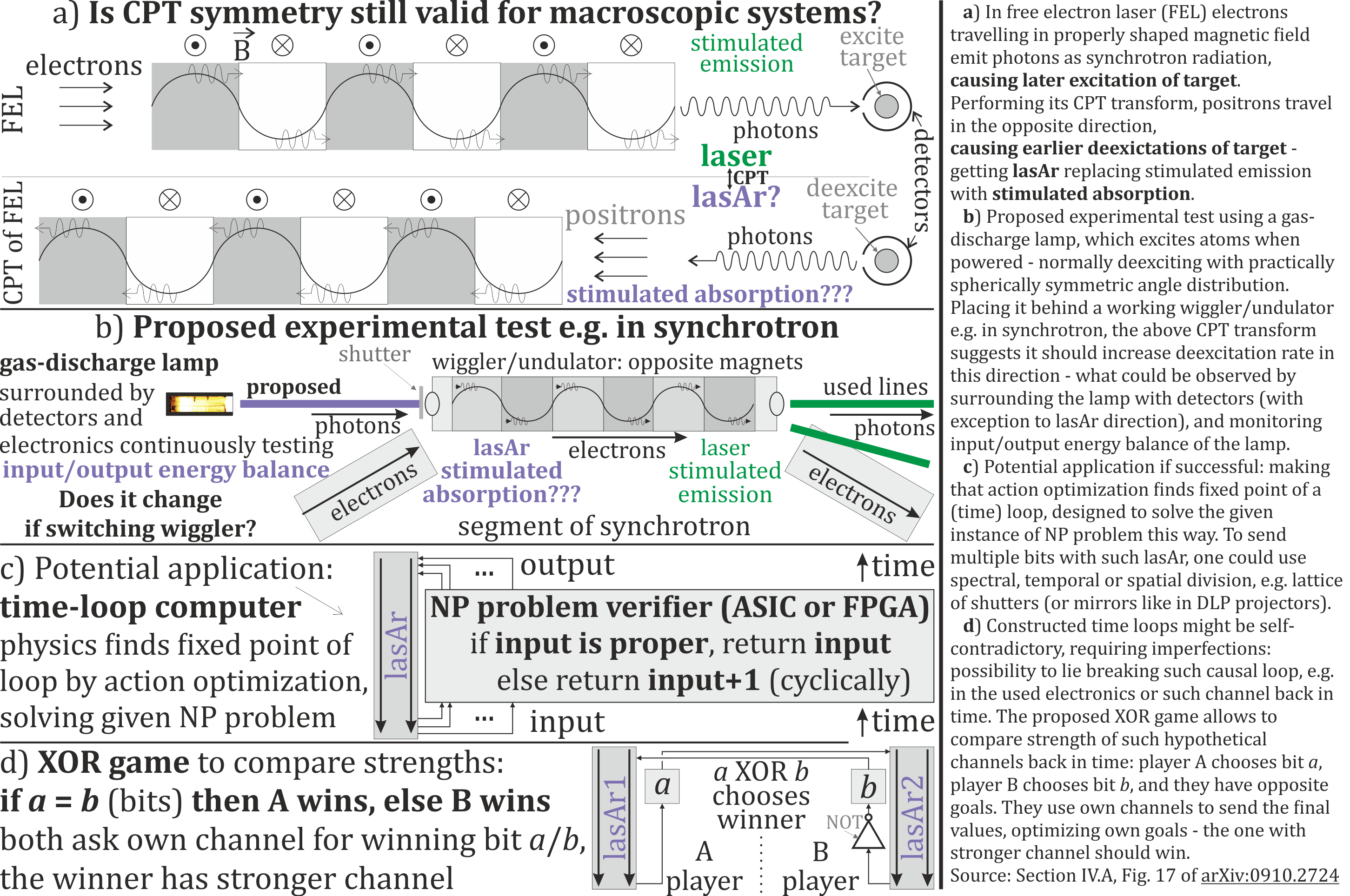Let me add a remark about CPT theorem and its possible applications - most physicists believe this symmetry is satisfied, it also contains time symmetry. So can we prove that causality only works past -> future? (as in Euler-Lagrange, in contrast to the least action principle).
For example laser causes excitation of target later - so shouldn't CPT analogue of laser cause deexcitation of target earlier?
While building "CPT analogue of laser" might seem extremely difficult, for free electron laser (FEL) it looks quite simple:
